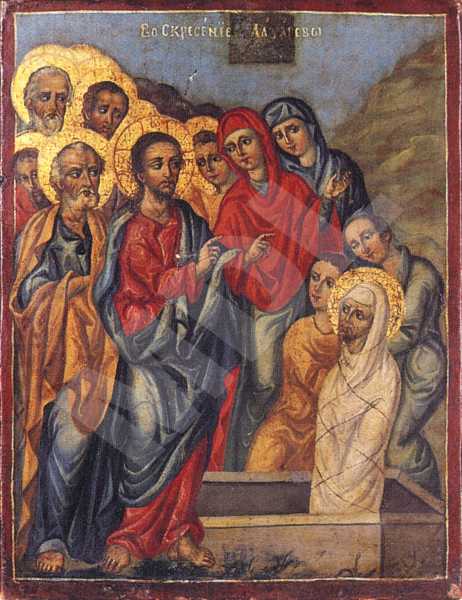The Raising of Lazarus
Type:
Icon
Period:
The beginning of the
19 century
Toma Vishanov-Molera, born around 1750, painter of icons and murals, founder of the Bansko school of art. He grew up in the family of the clergyman Vishan. Around 1765 he went to Vienna, where he studied painting. It is not known who were his teachers there or when he returned to Bansko. His fellow villagers called him the Moler, Molera(from German Maler ‘painter’), whence the entire family's surname. Under the influence of the European 18th century art Toma Vishanov painted his works in a new manner, unknown until then in Orthodox art. The figures are realistic, vivid, expressive. Toma Vishanov is an innovator in the early period of Bulgarian Renaissance. His ideas on art were not understood and at first were rejected by his contemporaries. His work has not been studied extensively. He died after 1811 in Bansko.
Dimmensions (cm):
29
/ 22.4
/ 2
Location
Country: Bulgaria
Province: Blagoevgrad
Town: Bansko
Museum: Museum complex
Source
Country: Bulgaria
Province: Blagoevgrad
Town: Bansko
Church: St. Trinity
Description
The iconography treats this theme as a composition of many figures, filling up almost the entire pictorial field. Painted in the icon's central part are the figures of Christ, blessing with his both hands, and of Lazarus, standing half upright in the tomb, wrapped in a white shroud. Mary and Martha, the sisters of Lazarus, are painted in the second distance, in the row of the apostles. Here again, by tradition, painted are only the faces of Saint Peter the Apostle, of the Evangelist Saint John the Theologian, of the apostles Saint Andrew and Saint Paul. For Christ's other disciples the painter has resorted again to the method of the isocephaly in painting a greater number of saintly persons. Behind the figures, painted as a background, is a conventional landscape.
Iconographical technique: Tempera
The varnish cover is applied thinly and evenly.
Base material: Wood
The icon's base is a one-piece softwood panel. The ground cost is of plaster, laid in thin layers.
State, restoration traces and comments
There are no traces of any previous restoration work on the icon.


